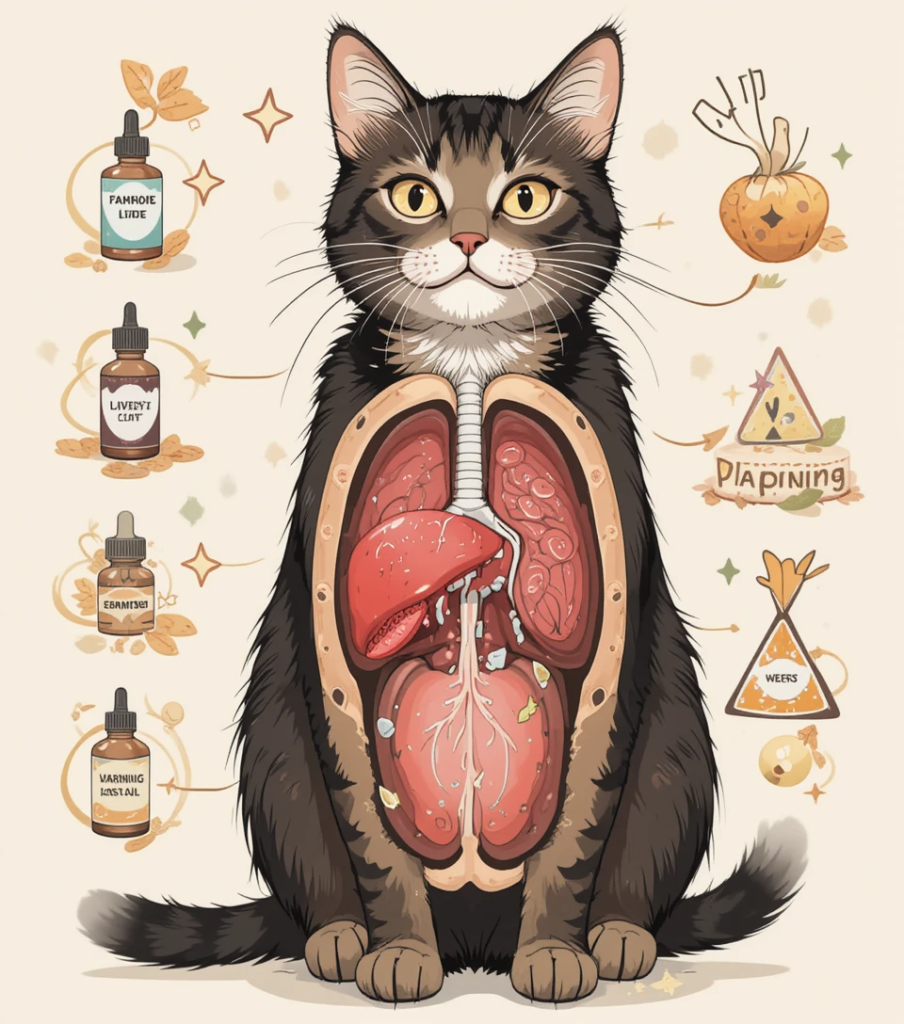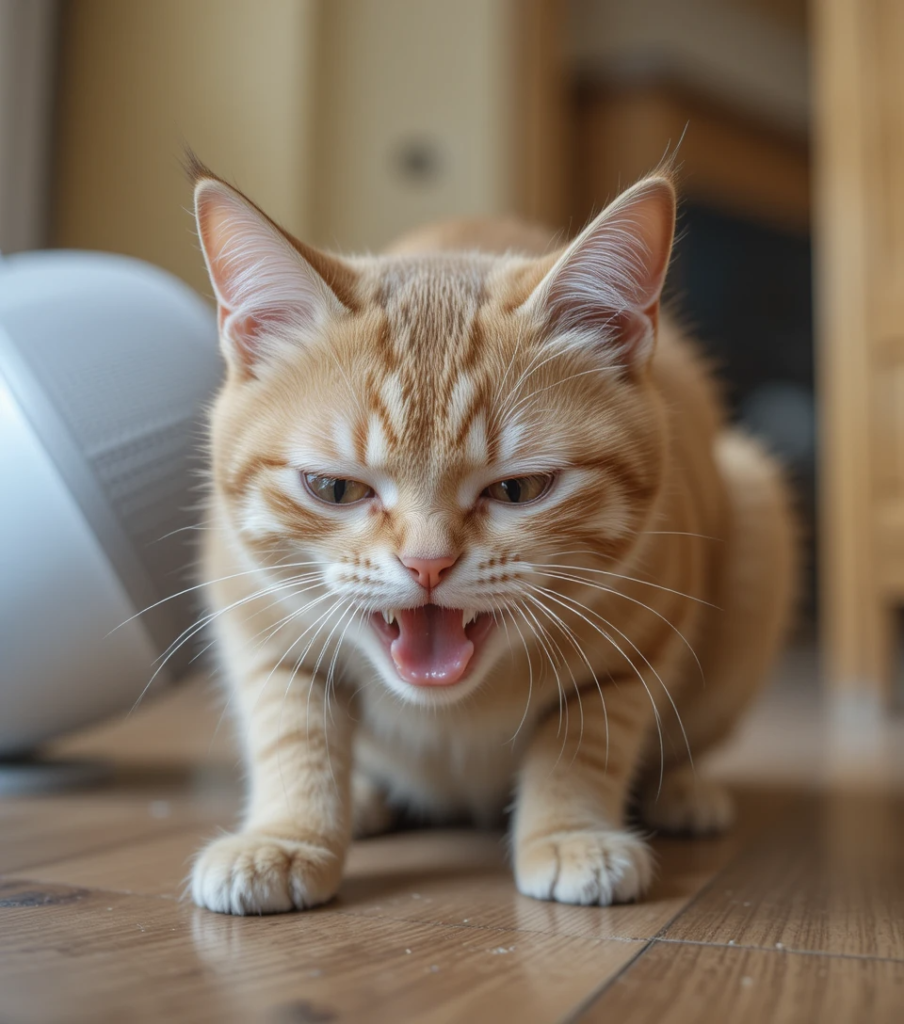If you love the soothing power of essential oils but also share your home with a curious kitty, you’ve likely wondered: What essential oils are safe for cats? You’re not alone — and the good news is, relief starts here. This guide will help you enjoy the benefits of aromatherapy while keeping your feline friend safe and happy.
🧠 Why Cats React Differently to Essential Oils

Cats are unique in the animal world. Their liver lacks a key enzyme (glucuronyl transferase) that helps break down many substances — including compounds found in essential oils. This makes them far more sensitive to oils than dogs or humans.
Even inhaled in small amounts, some oils can trigger serious health issues, from skin irritation to liver toxicity. That’s why understanding what’s safe — and what’s not — is absolutely crucial.
✅ Safe Essential Oils for Cats (When Used Correctly)
Here are a few essential oils considered generally safe when properly diluted and used in a well-ventilated space:
🌿 Lavender Oil
- Calming and anxiety-reducing
- Great for creating a peaceful home environment
🌸 Chamomile Oil
- Gentle and soothing
- Supports stress relief and sleep
🌳 Frankincense Oil
- Supports immune health
- Known for grounding and balancing effects
🟡 Note: Even these oils must never be applied directly to your cat or added to their food. Only diffuse them lightly, and always offer your cat an escape route from the room.
❌ Toxic Essential Oils to Avoid Around Cats
Some oils are highly toxic to cats and should be avoided entirely, even in diffusers. Here are the biggest red flags:
- Tea Tree Oil
- Eucalyptus Oil
- Peppermint Oil
- Cinnamon Oil
- Citrus Oils (lemon, orange, etc.)
- Clove and Wintergreen
These can cause symptoms like drooling, vomiting, tremors, difficulty breathing, and even liver failure.
🌀 How to Safely Use Essential Oils Around Cats
If you still want to enjoy essential oils at home, follow these safety rules:
- Use a water-based diffuser in a well-ventilated space
- Keep oils out of reach and never apply directly to your cat
- Diffuse for short periods and observe your cat’s behavior
- Choose high-quality, pure essential oils (organic if possible)
🚪 Pro tip: Always leave a door open so your cat can leave the room if they choose. If they sneeze, hide, or act oddly — turn off the diffuser immediately.
🚨 Signs of Essential Oil Poisoning in Cats

Watch closely for these symptoms if essential oils have been used nearby:
- Excessive drooling or pawing at the mouth
- Vomiting or nausea
- Lethargy or weakness
- Tremors or uncoordinated movement
- Difficulty breathing
- Collapse or seizures
If you notice any of these, contact your veterinarian or Pet Poison Helpline (800-213-6680) immediately.
🩺 What Vets Say About Essential Oil Use
Veterinarians largely agree: Caution is key when it comes to essential oils and cats. The ASPCA lists many oils as toxic, and most vets recommend avoiding them unless absolutely necessary — and only under professional guidance.
🌱 Holistic Alternatives for Feline Well-Being
Looking for natural ways to calm your cat without the risk?
- Herbal supplements like valerian or catnip
- Pheromone diffusers (like Feliway)
- Calming treats with L-theanine or tryptophan
- Interactive toys to reduce stress and boredom
These are safer and vet-recommended options to improve your cat’s mood and behavior.
🐾 Final Thoughts: Safety First, Always
Essential oils offer powerful natural benefits — but when it comes to cats, knowledge is your best defense. Stick with safe options, use oils sparingly and smartly, and always observe how your cat reacts.
Your furry friend’s health and comfort matter most — and with the right precautions, you can both breathe easier. 💜
❓ 10 FAQs About Essential Oils and Cats
- What essential oils can I safely diffuse around cats?
Lavender, chamomile, and frankincense — but only in moderation and never directly near your cat. - Is lavender essential oil safe for cats?
Yes, in small amounts and only when diffused properly. Never apply it directly. - Why are some essential oils toxic to cats?
Cats lack the liver enzyme needed to break down certain compounds in oils, leading to toxicity. - How do I know if my cat is reacting to essential oils?
Watch for symptoms like drooling, vomiting, lethargy, or uncoordinated movement. - Can I apply essential oils to my cat’s fur?
No. Topical use is not recommended unless prescribed by a vet. - Are diffusers safe to use around cats?
Only if used sparingly, in a well-ventilated room, and with non-toxic oils. - What are the signs of essential oil poisoning in cats?
Vomiting, tremors, difficulty breathing, drooling, and seizures. - How can I calm my cat naturally without using oils?
Use pheromone diffusers, calming treats, or herbal alternatives like valerian root. - What should I do if my cat licked essential oil?
Wipe the mouth, avoid inducing vomiting, and call your vet or poison helpline immediately. - What essential oil brands are safest for pets?
Look for brands that offer pet-safe certifications or consult your vet before buying.

